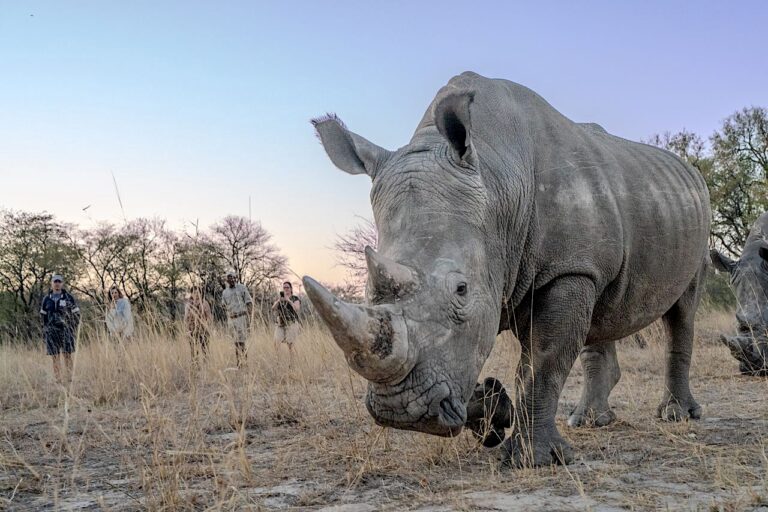Key Discovery Made in Feline AIDS Research
University of Florida Release
September 10, 2005
GAINESVILLE, Fla. — A University of Florida researcher has discovered an unexpected link between the viruses that cause feline and human AIDS: Cats vaccinated with an experimental strain of the human AIDS virus appear to be at least as well-protected against the feline version of the disease as those immunized with the vaccine currently used by veterinarians.
The surprise finding may mean cats with feline immunodeficiency virus, also known as FIV or feline AIDS, could eventually be treated even more effectively using some form of the experimental human vaccine. Researcher Janet Yamamoto, a professor at UF’s College of Veterinary Medicine, also theorizes that these emerging relationships between the two viruses could one day lead to a vaccine for human AIDS.
Results from Yamamoto’s research can be previewed in today’s online issue of the journal AIDS.
FIV is a natural infection of domestic cats that results in an immunodeficiency syndrome resembling HIV infection in humans. Since its discovery in 1987, FIV infection of cats has been used in vaccine studies as a small-animal model of human AIDS.
|
Feline immunodeficiency virus from Wikipedia.org The primary mode of transmission for FIV is deep bite wounds whereas FeLV is easily spread by casual contact such as grooming and shared water bowls; experts disagree as to whether FIV can be spread by casual contact. FIV attacks the immune system of cats, much like the human immunodeficiency virus (HIV) attacks the immune system of human beings. FIV and HIV are both lentiviruses, however, neither can infect the other’s usual host: humans cannot be infected by FIV nor can cats be infected by HIV. Because biting is the most efficient means of viral transmission, free-roaming, aggressive male cats are the most frequently infected, while cats housed exclusively indoors are much less likely to be infected. FIV infected cats are often unnecessarily euthanised. A vigilant pet owner that treats any secondary infections can make the difference. An infected cat can often live a nearly normal life span. The chance that an FIV infected cat will pass the disease onto other cats within a household is less than 2% as long as there is no fighting or biting. Keeping infected cats separated from disease free cats is the only sure way of preventing the spread of the disease. FIV can infect other feline species, and in fact in some large wild cat species, such as African lions, the virus is commonly present. However, unlike in domestic cats, the virus does not necessarily cause disease in these species, perhaps because these species have acquired, during evolution, mutations that confer resistance to it. |
“We were the first to demonstrate that you can make an effective vaccine against a virus in the AIDS family of viruses,” said Yamamoto, a co-discoverer of FIV.
Yamamoto holds the patent on the only approved vaccine available through veterinarians to protect cats against FIV. Her most recent studies have attempted to improve the efficacy of that vaccine by using strains of FIV found in cats in which the disease had not progressed for some reason over several years.
To determine the extent to which the human and feline AIDS viruses react to each other, and any implications that might exist for vaccine efficacy, Yamamoto began experimenting with long-term, nonprogressive strains of FIV that led to the current commercial vaccine. Now she is working on an HIV vaccine consisting of HIV virus from long-term, nonprogressing individuals.
“We purposely made vaccines with strains that weren’t virile,” Yamamoto said. “We found that whenever we tried using less virulent strains of virus, we were able to make a better vaccine.”
Yamamoto’s team was also surprised to discover that a core protein found in HIV also effectively protects cats against FIV.
“So what does this mean to human AIDS research? The viruses HIV and FIV are from the same viral family,” Yamamoto said. “For that reason, the amino acids that make up the proteins in both viruses share some common regions. There appear to be regions of HIV, or variations of the core protein we used in our studies, that may provide protection in vaccine form against HIV.”
Some compounds made from separate virus strains have been successfully used in vaccines against viruses from the same subfamily, such as smallpox in humans, which is made from cowpox virus, and human measles vaccines for canine distemper in puppies.
“Therefore, protective vaccines based on cross-reactive regions of AIDS viruses can provide broad immunity, and may be useful against viruses that are currently evolving in a new host, such as HIV infection of humans,” Yamamoto said.
Alan L. Landay, a professor of immunology and microbiology and associate department chairman at Rush University Medical Center in Chicago, called Yamamoto’s findings “very exciting.”
“This raises a potential whole new area for research in the field of vaccines that with the current approaches haven’t yielded any success to date,” said Landay, whose research team is working to develop novel immune strategies to treat HIV infection. “We need to explore all the potential options available to us for developing an HIV vaccine.”
This is a University of Florida press release. You can find the original release at UF scientist finds unexpected link between cat and human AIDS viruses (Thursday, September 8, 2005)














